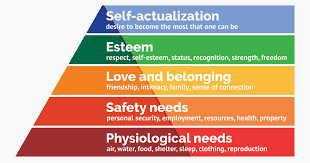Building an Org at a Remote Site - Part 3
The next 18 - 36 Months
Congratulations if you have survived the first 18 months. Most likely you have a product or a service that customers are willing to pay now. So you are either looking at rapidly scaling your org now or you are considering your exit plan(sell your startup).
Assuming you are looking at scaling, you will be spending a lot of time on building, managing and troubleshooting teams during this time. Your management principles will be your guiding force during this time
Management Philosophy
Everyone has their own set of management philosophies. Here are some of the management philosophies that I practice
Golden Rule - Treat the people the same way you want them to treat you
- This is a people intensive industry. Leaders who are not ethical will be found out quickly
Communication - As though you are on a live TV with your CEO
- Try not to be impulsive. Think from your company interests, followed by your BU/Group/Team and the last would be yours
Build upon people strengths - And not weaknesses
- Match up people aspirations, strengths to opportunities so that they can grow
Prioritize the hard problems -
- I learnt it the hard way. Need to take the problem head-on. Avoiding isn’t going to solve the issue and it is going to snowball into much larger issue
Relationships - Battle and War Analogy
- Value long term relationships compared to short term transactional relations. You can look at workplace relationships into 3. i.e. Managing your team, Managing your Peers and Managing Up. During my early years in mgmt, I spent too much time managing down vs managing up or managing sideways. However all of them are important
Characteristics of High-Performance Teams
No two teams are identical and it is hard to figure out what distinguishes a high performance team. Here are some of my observations.
Chasing the North Star
The teams perform well when they are clear on the vision and mission statement. At the individual team member level, clear roles and how it maps to the overall success of the product is critical. Performance is best measured with numbers. OKR is a great framework that helps team members judge their scores and align accordingly. Absence of these key ingredients can result in lower performance.
Being Inclusive
While it is natural for each team member to possess different strengths, it is important to hear diverse opinions and share mutual respect. Leaders can enforce this with their action and this soon trickles down to each individual member. Anonymous Surveys are great ways to capture the sentiments around inclusive culture
Motivation
This is probably best captured by Maslow's hierarchy of needs. This comprises a five-tier model of human needs, often depicted as hierarchical levels within a pyramid.

Most newcomers in India typically start at the lower levels of the Pyramid and as they gain experience their motivation factors go higher up in the pyramid. While this is mostly true in my experience, I have been seeing a change in the last couple of hires of New College Grads. It is probably heralding India Coming of age (For the good)
Disagree and Commit
High performance teams typically debate but do agree to commit to a plan. Communication is critical to resolve conflicts in a timely fashion.
Troubleshooting Teams
Leaders are typically second or third level managers. It is tricky to figure out when to intervene and not step on your manager’s toes. One good way to figure out the timing is based on signals coming from the team.
If the team is working hard but isn’t able to deliver, have quality issues or have morale problems, it is time for you to take immediate action. You may either want to add some help (read bring in people with the right skill sets or temp help, review the workload, share the pain with the grunt work with other teams are some of the techniques you can use)
If the team is performing extremely well but are doing the same thing for a long time, it is also time for you to intervene. This can result in people building empires and creating artificial obstacles to other teams. A good way to solve this problem is by allocating new work or rotating work. This helps the team learn continuously but will definitely bring down your popularity.
Where Is the Monkey?
During the first 18 months, the team is small and it is easy to brainstorm ideas. However as the org becomes big, your urge to jump in and help with a solution can have a negative impact. Not only will it impact your ability to spend time on the other critical areas of work, it will also encourage people to use your name for making the decisions. Instead, you should push for accountability for the team and not pile up work on yourself. I highly recommend you read this [hbr article]{.ul} covering this topic.